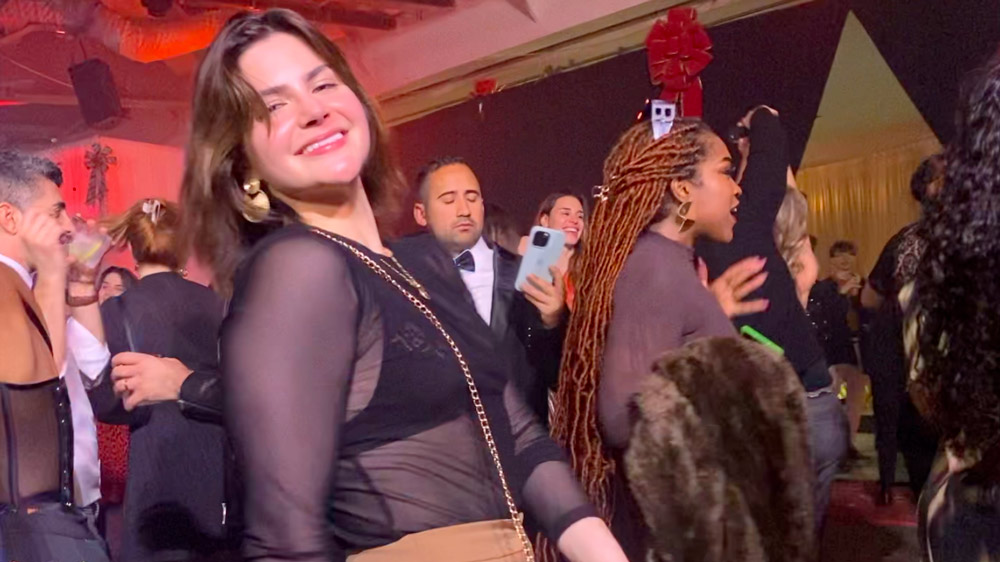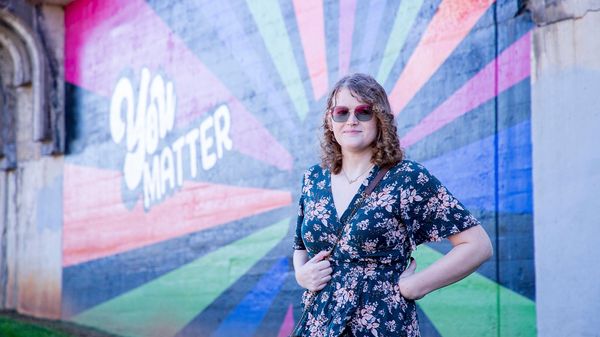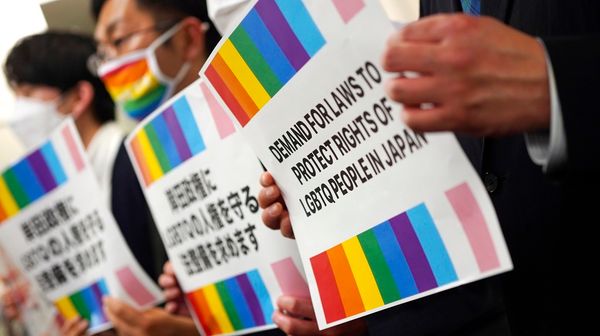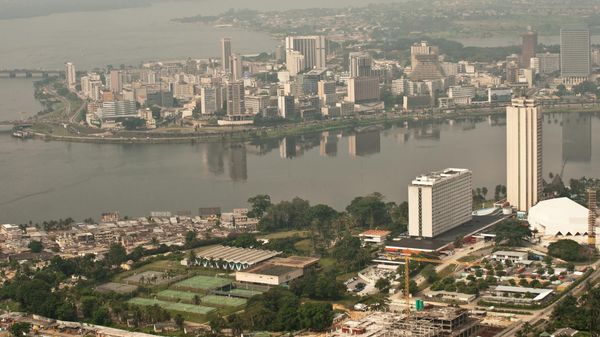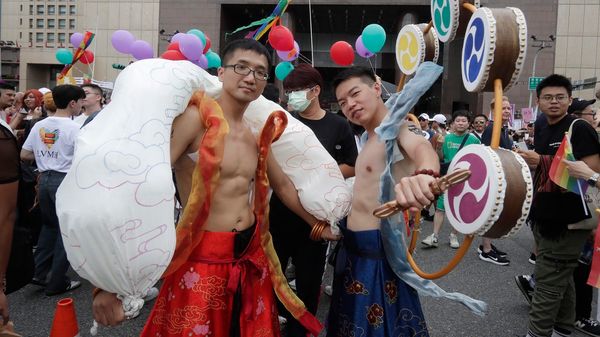
October 1, 2017
Rehab Planned for SF's Pink Triangle Park
Charlie Wagner READ TIME: 5 MIN.
Pink Triangle Park and Memorial needs help and rescuers are on the way.
Plants are not thriving, five of the memorial's 15 pylons are unstable and can be moved by hand, four pylons are cracked, century plants have bloomed and are dying. And the park, located at the northwest corner of Market and Castro streets (bordered by 17th Street), is not accessible to the disabled.
That is what is driving Andrea Aiello and John Goldsmith in their work with landscape designer Jason Rowe to refresh the landscape and restore the memorial.
Interested people will have a chance to tour the park during next week's Castro Art Walk, and to donate to the project at fundraisers planned for November.
Aiello is the executive director of the Castro/Upper Market Community Benefit District. The Castro CBD has been involved with the park since January when its Castro ambassadors reported that it was looking especially rundown.
"Pink Triangle Park is a very important part of the community," Aiello explained, "even though it is outside the Castro CBD footprint."
She and Goldsmith, the park's primary caretaker, applied for a Community Challenge Grant from the city and San Francisco won a $100,000 grant for the park renovation project.
However, the total budget for the refurbishing is $250,000, so the Castro CBD is working to raise another $90,000 to $100,000. The remainder will be covered by in-kind donations.
The triangular property of approximately 3,000 square feet is owned by San Francisco Public Works, which pays for the power and water used by the park. For decades, the land was used primarily for utility boxes and was a popular homeless encampment. In the mid-1990s, Public Works proposed turning the area into a parking lot, but neighbors stopped that and turned it into a casual community garden.
In 1999, Joe Foster, president of what was then called the Eureka Valley Neighborhood Association, visited Amsterdam and saw the Homomonument, one of the first memorials to LGBTQ people killed by the Nazis in World War II. That monument commemorates the gay men interned in Nazi concentration camps, whose camp uniforms were marked with pink triangles to denote their homosexuality.
Foster inspired EVNA, now known as the Castro/Eureka Valley Neighborhood Association, to begin fundraising for a similar monument and so was born San Francisco's memorial to LGBTQ Holocaust victims. EVNA selected Susan Martin and Robert Bruce to design the art for the memorial.
History
During the Nazi era (1933-1945), an estimated 15,000 gay men were interned in concentration camps on charges of homosexuality. Queer public historian Gerard Koskovich, communications director for the GLBT History Museum, estimated that 60 percent of the pink-triangle internees died in the camps, the majority within their first year of detention.
Fifteen triangular sierra-white granite pylons, each with a pink triangle inlaid on the top, form the memorial in Pink Triangle Park. Each pylon represents 1,000 internees. Pink Triangle Park was formally dedicated in June 2003.
"Although its name refers to the symbol forced on gay men in the concentration camps, Pink Triangle Park is a place to remember all the forms of anti-LGBT persecution under the Nazi state and to commemorate the suffering and the everyday courage of all LGBT people during those dark times," Koskovich pointed out.
"With the exception of a tiny handful of cases, lesbians, as such, were not sent to the camps, but they clearly experienced other forms of state persecution, including the banning of their organizations, publications, and bars. And they faced intense social pressure, reinforced by Nazi propaganda, to conduct themselves in a conventionally feminine way and to marry men and bear children," he added.
Justin DelVersano and his partner, Jack Major, were the primary caretakers of Pink Triangle Park for about 15 years, until they were forced to retire due to age-related physical limitations. Goldsmith took over in December 2016 and immediately put out a call for volunteers via Facebook and other means. He nicknamed the responding people as the "Guardener Guild" because they are both cultivating and protecting the site.
Guild work parties are on the first and third Saturday of every month. The next one is Saturday, October 7.
"I want the park to be eco-friendly and a healing garden," Goldsmith said, "and we even have a volunteer who is a certified horticultural therapist."
Rowe designed the original landscape. For the drawing submitted with the grant application, he provided his services pro bono. Aiello expects Rowe will be paid for additional services after the contract with the city is signed.
New Plants, Accessibility
The redesign scope includes a total plant refresh, improved signage, a new irrigation system, and making the park partially ADA-compliant. Current plans are to make one park entrance at the end nearest Castro and Market streets accessible. That was facilitated by moving a bus shelter formerly on the Market Street side of the park to the front of the nearby Pottery Barn. That is not yet an approved permanent move, according to Aiello.
There will be a second ADA-compliant entrance at the other end, next to the building used by startup Shift. Goldsmith said the area currently paved with loose pink granite gravel will be shifted so that a hard-surface, ADA-compliant walkway can be constructed to surround the triangle.
Two of the damaged pylons will be replaced with ones stored since the memorial was first installed. All pylons will be reset on concrete bases for increased stability.
Other upgrades under consideration include planting low-profile plants to deter people from sleeping and dumping trash, and installing granite-block benches donated by the Children's Garden, formerly part of the Moscone Center.
Outside the current plans, Goldsmith hopes the low wall facing Market Street, currently concrete painted pink, eventually can be improved with a tile mural and seating on top.
Goldsmith is a master gardener certified by UC California Extension and a Rosarian certified by the American Rose Society. He also works with the Theatrical Wardrobe Union on concerts and theatrical productions such as "Kinky Boots."
Aiello and Goldsmith welcome public support and participation in the park. The first opportunity will be next week when the Castro Art Walk is held Thursday, October 5 from 6 to 9 p.m. Art Attack Gallery, at 2358 Market Street, will host memorial designer Martin at 7, speaking on the history and evolution of the park. Martin and Goldsmith will lead a guided tour of the park afterward. Admission is free.
To raise funds for the renovation, a brunch at the nearby home of a park supporter is planned for Sunday, November 5. Another fundraiser is planned for Thursday, November 16 at Blackbird, located at 2124 Market Street. All contributions are tax-deductible through the Castro CBD. Details for both events will be posted on the park website.
The Park Design Committee, under the auspices of the Castro CBD, will begin meeting in early October. Meeting information will be published on the Castro CBD website 72 hours in advance.
Once the Castro CBD has a signed contract with the city, Aiello will announce sessions for community input on the park.
"The contract will be for an 18-month project," she stated, "and our goal is to be done in the spring of 2019."
Both Goldsmith and Aiello want the renovated Pink Triangle Park to be a memorial as well as an oasis of calm in the Castro.
And as Goldsmith noted, "It's important to remember the past and learn from it."
For more information, visit https://pinktrianglepark.org/, or http://castrocbd.org/
